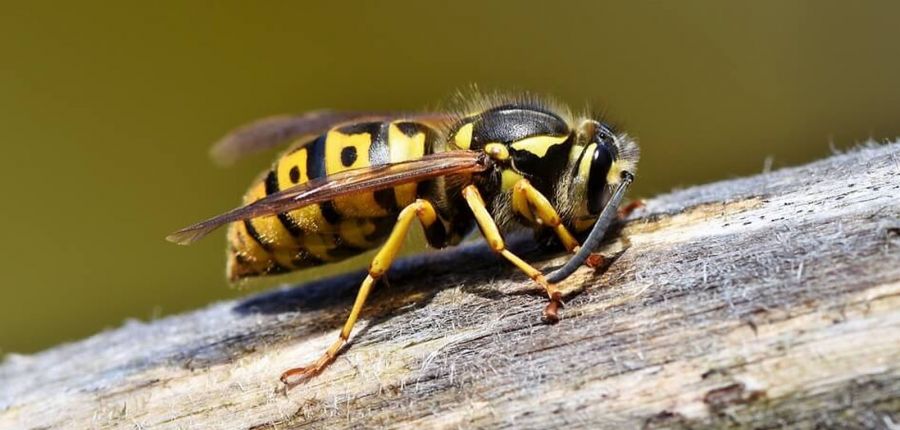Wasp alert!
Posted By: John The Beekeeper Category: Pests and DiseasesI’m wary of wasps, not just because they sting, but also because wasps are attracted to the sweet scent of honey being given off at this time of year from my bee hives and a small or weak colony of honeybees can quickly be wiped out by a determined bunch of wasps intent on making off with the honey.
Large numbers of wasps seem to be in evidence early this year, no doubt due to the long spell of hot, dry weather which will have helped wasp colonies to build up quicker than normal. The very sight of these instantly recognisable insects with their black and yellow striped bodies is enough to strike fear into the heart of most people, as they have an uncanny knack of turning up when they are least wanted – when a picnic is unpacked or a barbecue meal is ready to enjoy! Not only do wasps sting, a painful experience by any measure and a degree worse than the odd sting that I get from my bees, but also the scent given off by the venom will quickly attract other wasps to the scene. Unlike their peaceable bumble and honey bee cousins, wasps can be a nuisance to humans and will often attack with little or no provocation. If you have a fruit tree in your garden, you will know only too well that wasps are also found on rotting fruit, such as windfall apples and plums. Best check before picking one up.
So what good, if anything, do wasps do?
In spite of their threatening behaviour, wasps perform a number of useful functions. They are predators, feeding off protein in the form of other insects as well as caterpillars, grubs and other pests which cause damage to fruit and vegetable crops. Unfortunately, they don’t discriminate between creatures that we regard as pests and other insects which perform beneficial roles for gardeners.
Wasp life
Wasps are sociable rather than solitary insects and at its peak, a wasp colony can contain up to 10,000 wasps. A wasps’ nest is a thing of wonder, created from wood pulp which is produced by the worker wasps nibbling dry timber and producing something akin to paper. If you’ve ever watched a wasp on the side of a wooden shed, you can see its mandibles at work, chewing off tiny pieces. A completed nest is about the size of a small football, pale brown in colour, surprisingly fragile and often found attached inside the corner of a garden shed or a beam in the loft maybe, the wasps coming and going through a nearby hole.
At the heart of every wasp colony is a queen whose role is to lay eggs, all of which when hatched will infertile females, the ‘worker’ wasps who gather food, build the nest up and help keep the colony in good order. As summer progresses, some of the eggs will hatch as fertile females and males (‘drones’) which will eventually mate, the drones dying and the mated females hibernating as queen wasps, ready to begin laying the following year. The old queen and her workers will then die off as colder weather arrives in late autumn, but if you come across what looks like a deserted wasps’ nest, beware - there may be one or two insects that have survived the cold and are lurking within, ready to defend their home. That huge wasp you spot on a warm spring day, crawling out from behind the curtains, almost certainly is a queen, recently emerged from hibernation.
Deterring wasps
The traditional way of dealing with wasps is to set traps in the form of a bottle or jar filled with a mixture of water and jam, the theory being that in their haste to feed on the sweet and sticky jam, the wasps will fall in and drown. A better (and kinder) way is to deter, rather than attract wasps. Apparently, wasps are territorial and are put off if they detect another colony in the vicinity, so a dummy wasps’ nest seems to do the trick. Special products are now available (I have one hanging close to my bee hives) but a brown paper bag, padded out with something soft to give it shape and hung wherever wasps are causing a nuisance should work just as well.







